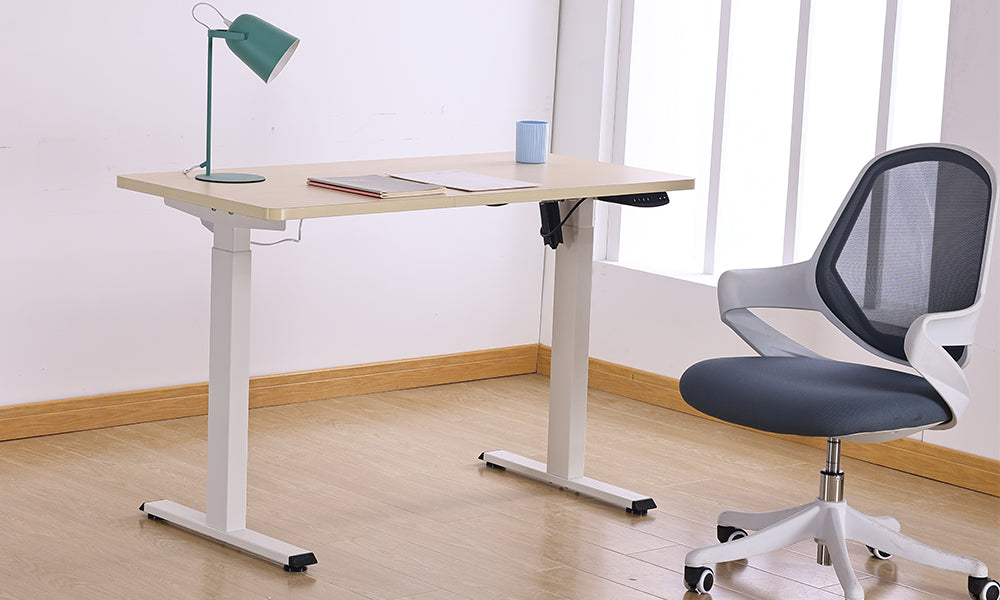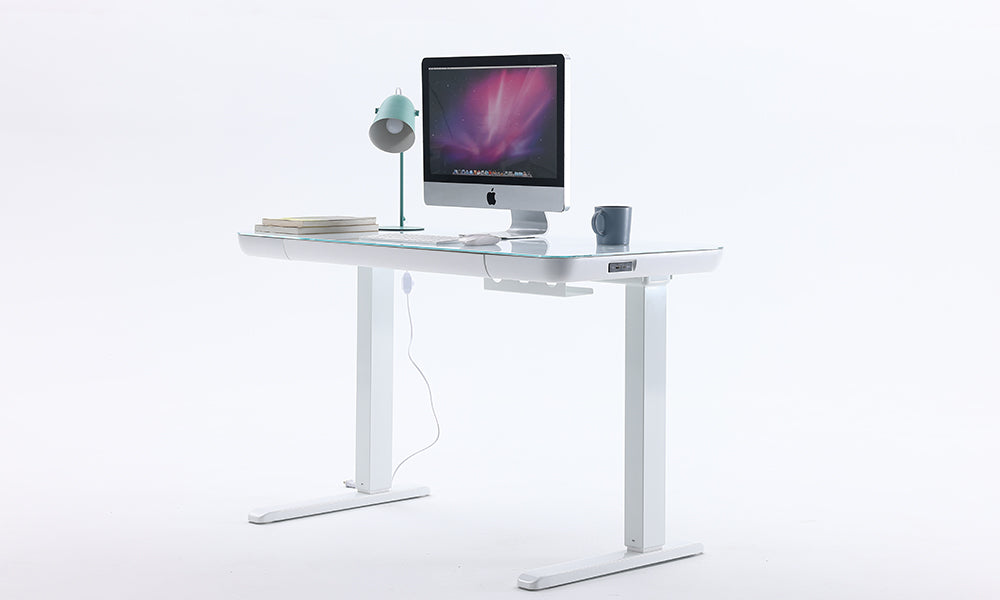Transitioning from a traditional sitting desk to a standing desk can be a game-changer for your health and productivity. However, making this shift requires more than just swapping furniture. It involves adjusting your body, workspace, and habits to ensure a smooth and beneficial transition. Here’s how you can effectively adjust to a standing desk.
1. Start Slowly
One of the most crucial steps in adjusting to a standing desk is to start gradually. If you’re used to sitting all day, your body will need time to adapt to the new posture. Begin by standing for 15 to 30 minutes at a time, and then sit for the next 30 to 45 minutes. Over the course of a few weeks, you can slowly increase your standing time.
2. Wear Comfortable Shoes
Standing for extended periods can strain your feet, especially if you’re not wearing the right footwear. Invest in a pair of supportive, comfortable shoes to reduce discomfort and prevent potential foot problems. Avoid high heels and opt for shoes with good arch support and cushioning.
3. Use an Anti-Fatigue Mat
An anti-fatigue mat can make a significant difference in your comfort level when using a standing desk. These mats are designed to reduce the stress on your feet, legs, and lower back by providing a cushioned surface to stand on. This can help minimize fatigue and improve your overall standing experience.
4. Adjust Your Desk and Monitor Height
Proper ergonomics are essential for a comfortable standing desk setup. Ensure that your desk and monitor are at the correct height to avoid strain on your neck, shoulders, and back. Your monitor should be at eye level, and your desk should be at a height where your elbows are at a 90-degree angle when typing. This setup will help maintain a neutral posture and reduce the risk of discomfort or injury.
5. Incorporate Movement
Standing still for long periods can be just as harmful as sitting. To keep your blood circulating and muscles engaged, incorporate movement into your routine. Shift your weight from one foot to the other, take short walks, or do light stretching exercises. This will help prevent stiffness and promote overall well-being.
6. Pay Attention to Posture
Good posture is key to reaping the benefits of a standing desk. Keep your shoulders back, your spine neutral, and your weight evenly distributed on both feet. Avoid leaning forward or slouching, as this can lead to discomfort and potential injuries. Regularly check and correct your posture throughout the day to ensure you’re standing correctly.
7. Take Regular Breaks
Just as with sitting, it’s important to take regular breaks when using a standing desk. The Pomodoro Technique, which involves working for 25 minutes and then taking a 5-minute break, can be an effective way to manage your time and prevent fatigue. Use your breaks to move around, stretch, or do a quick physical activity to keep your energy levels up.
8. Stay Hydrated and Eat Healthily
Maintaining good hydration and a balanced diet can support your body as it adjusts to standing more. Drinking plenty of water helps keep your muscles and joints lubricated, reducing the risk of fatigue and discomfort. Eating a healthy diet provides the necessary nutrients to support your overall well-being and energy levels.
9. Listen to Your Body
Your body will give you signals if something isn’t right. Pay attention to any pain or discomfort you experience and make necessary adjustments. If you feel sore or fatigued, take a break or adjust your standing time. It’s important to find a balance that works for you and allows your body to adapt gradually.
10. Consider a Sit-Stand Desk
A sit-stand desk, which allows you to alternate between sitting and standing, can be a great solution for those who find it challenging to stand all day. This type of desk provides the flexibility to change positions throughout the day, reducing the risk of discomfort and promoting better posture and productivity.
11. Engage in Strengthening Exercises
Incorporating exercises that strengthen your core and lower body can help you adjust to standing more comfortably. Exercises like planks, squats, and lunges can build the muscles needed to support your posture and reduce the risk of fatigue. Regular exercise can also improve your overall health and well-being.
12. Create a Supportive Work Environment
Ensure that your work environment supports your transition to a standing desk. Communicate with your employer or coworkers about your new setup and seek their support. Having a supportive work culture can make it easier to adapt and stick to your new habits.
13. Set Realistic Goals
Setting realistic goals for your transition can help you stay motivated and track your progress. Start with small, achievable targets, such as standing for a certain amount of time each day, and gradually increase your goals as you become more comfortable. Celebrating your milestones can keep you motivated and committed to your new routine.
14. Be Patient
Adjusting to a standing desk is a gradual process that requires patience. It might take weeks or even months for your body to fully adapt. Be patient with yourself and give your body the time it needs to adjust. Remember, the long-term benefits of using a standing desk far outweigh the initial discomfort.
Conclusion
Transitioning to a standing desk can greatly improve your health and productivity, but it requires a thoughtful and gradual approach. By following these tips and listening to your body, you can successfully adjust to your new standing desk and enjoy the numerous benefits it offers. Embrace the change, stay patient, and you’ll soon find yourself feeling more energized and comfortable in your work environment.




Hinterlasse einen Kommentar
Diese Website ist durch hCaptcha geschützt und es gelten die allgemeinen Geschäftsbedingungen und Datenschutzbestimmungen von hCaptcha.